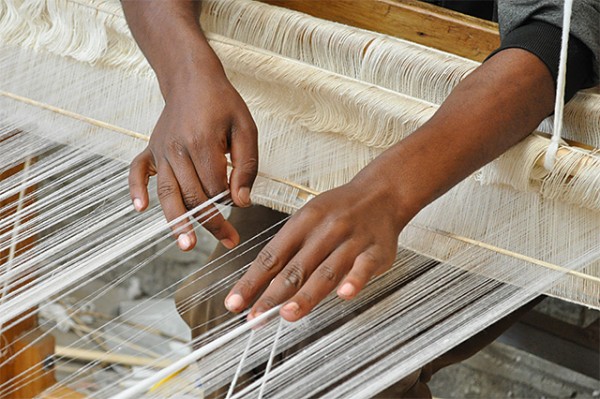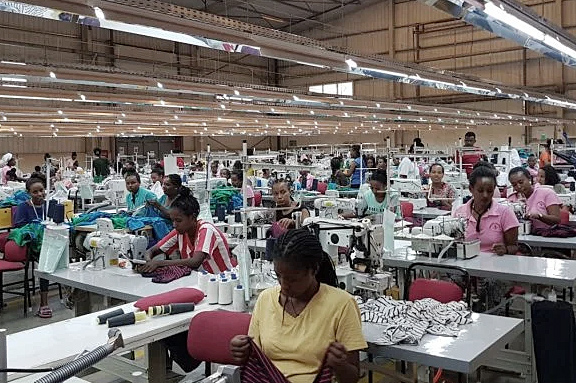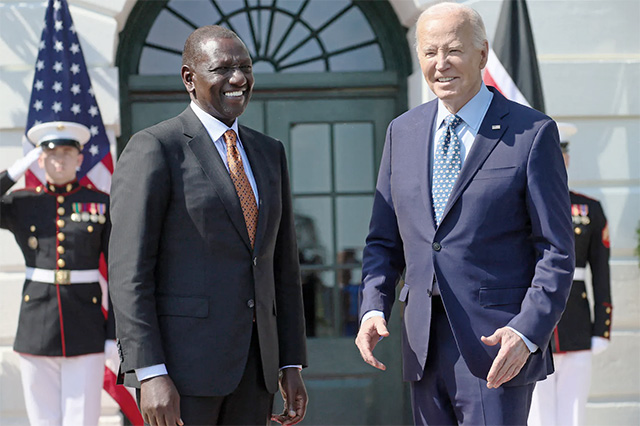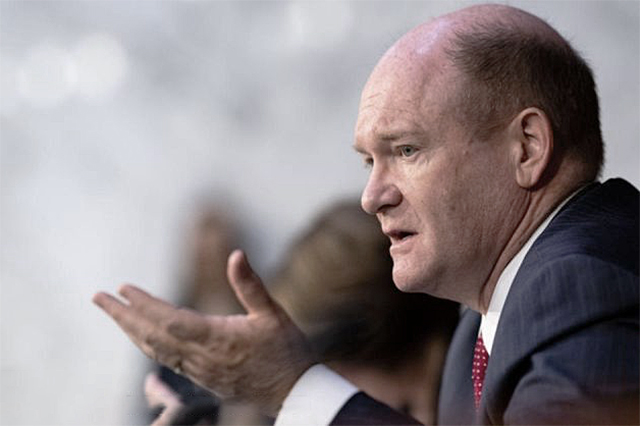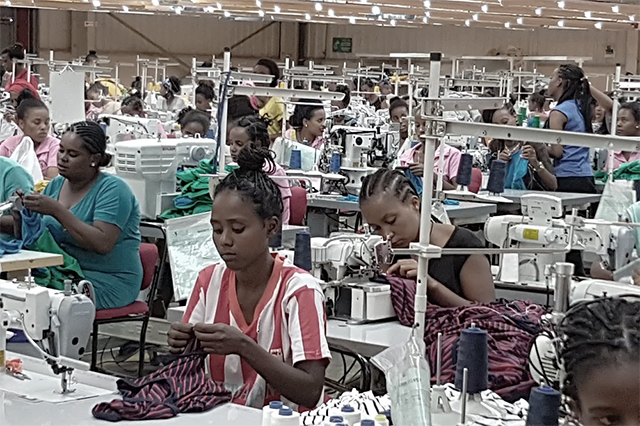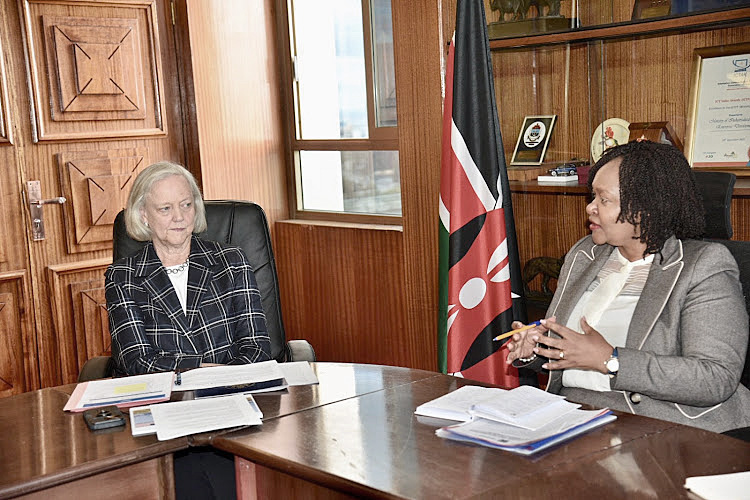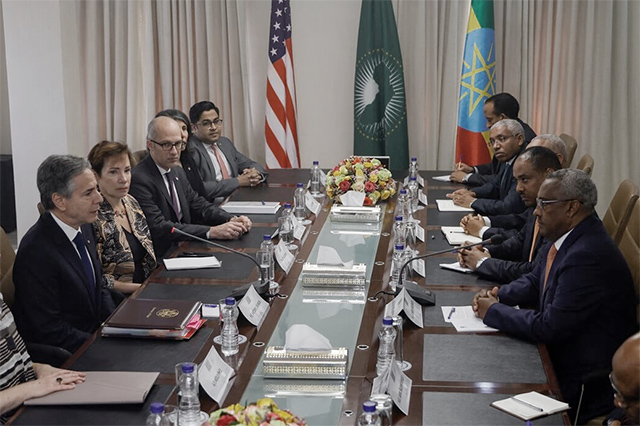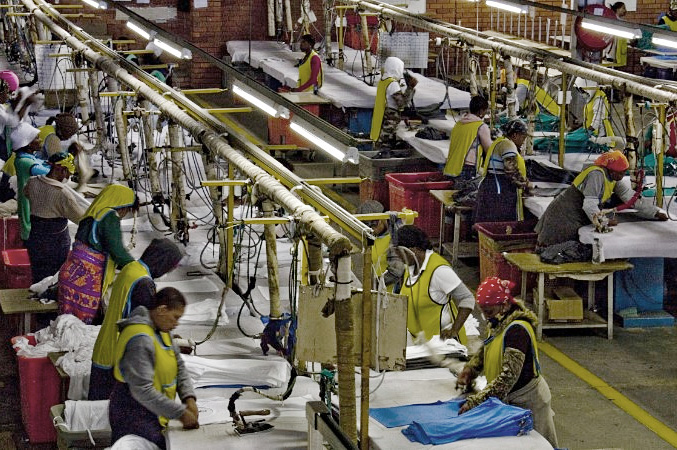Can you build a fashion business with a manufacturing base in Africa?
Liya Kebede made her first Lemlem garment in 2007 as a way to give back to Ethiopia, where the successful model was born and raised; a crucial stop before starring in Tom Ford campaigns and walking Miuccia Prada’s runway.
She found a group in Addis Ababa, her hometown and the sub-Saharan African country’s largest city, to produce garments handwoven in the traditional technique, with the gauzy white cotton she wore growing up but had since been replaced by more Western-style (and often second-hand Western) garments.
“When I created Lemlem it was about trying to create a solution to a problem,” Kebede says, smiling from behind her desk in a sunny office located in Manhattan’s Little Italy neighbourhood.
“The market of the weaving had gone down a lot and there were all these artisans that were looking for jobs and not finding any. What can I do to help move the needle a little bit along?”
Kebede modernised the silhouettes and instructed the artisans to weave in stripes of fluo-coloured yarn, which soon became Lemlem’s signature. In that first year, she manufactured 200 units and secured three points of sale. Collaborations with the likes of J.Crew — including a successful kid’s line — followed.
In 2017, production will exceed 25,000 units, with 300 points of distribution across six continents. She now employs 250 weavers and craftspeople in Ethiopia, with salaries increasing five-fold in the past decade. In recent years, Kebede has expanded parts of her production to Kenya — where she produces trend-driven fashion items — and sources materials in Rwanda, Madagascar and Mali.
The success of the line has compelled Kebede to change her namesake non-profit to Lemlem Foundation, which has expanded its mission of promoting maternal health in Africa to supporting the economic empowerment of African women. (The for-profit business donates 5 percent of all of its direct sales and proceeds from one-off collaborations to the foundation.)
While Kebede declined to disclose annual revenue figures, her 2017 goal for Lemlem — other than to expand the label’s fashion offerings, with plans to host its first-ever live presentation during the Resort 2018 season this spring — is to raise capital in order to scale further. And she plans to do so in Africa, where she has managed to achieve success.
And yet — expansive production, especially at the higher end of the market — still seems extraordinarily difficult to accomplish on the continent — if not impossible — with commonly known challenges such as unstable infrastructure, the bog of bureaucracy and a lack of information on how exactly to do it.
It’s also difficult to train artisans to make something that they’ve never made before, which means many brands must manufacture in several countries at once in order to achieve the desired results. That’s an expensive (and logistically mind-numbing) task, so it’s no surprise that few have attempted it. There was $815 million worth of apparel imported from Sub-Saharan Africa into the United States in 2015, down 5 percent from the year previous.
And yet, Africa remains an intriguing option for some fashion companies eager to commission work from skilled artisans, either for aesthetic (trends), or ethical reasons (job creation).
“We’ve had a wide variety of different successes and failures producing there,” says Brother Vellies founder and designer Aurora James, who manufactures her accessories line in South Africa, Kenya, Morocco and Ethiopia, and sources and creates materials in Mali, Burkina Faso and Namibia. (She also sources from the Caribbean island of Haiti). “We started in Southern Africa with rolling blackouts and strikes, and managed to get past all of that.”
A small, if high-profile, number of businesses large and small are looking to Africa, especially as costs to manufacture in Asia rise and a desire to build companies that produce garments in a sustainable, ethical way increases.
There is also the tendency for fashion brands to create one-off projects that generate buzz, but don’t offer long term employment. “They need to be committed to the fact that it might be tough in the beginning. It’s not China, you know?” says Ethiopian-American Yodit Eklund, founder of surf label Bantu Wax. “[African manufacturers] don’t have as long as a history as other places. I don’t think it’s wrong that there are Turkish factories, Chinese factories in Africa. I think it’s great. But it’s important to have a sustainable business.”
[Fashion brands] need to be committed to the fact that it might be tough in the beginning. It’s not China, you know?
To some Western eyes, Africa seems like a vastly different place than it was in 2007, when Lemlem was founded and U2’s Bono visited the Group of Eight (G-8) summit in Germany, where he advocated that the leaders of European, American and other leaders forgive their loans to Africa. Although scourges like AIDS, tuberculosis and malaria — diseases the group of nations pledged $60 billion to fight — continue to plague the continent and represent many of the struggles it faces, Africa has since become more attractive to investors thanks to its fast-growing economies.
Just two years earlier, Bono and his wife, Ali Hewson, founded Edun, a ready-to-wear company that aimed to promote African fair trade and production. LVMH acquired a 49 percent stake in Edun in 2009, but it has struggled to gain its fashion footing, due in part to a rotating roster of creative directors, as well as an unfocused manufacturing strategy which included producing garments in places like Portugal.
Today, however, after many iterations, Edun makes 80 percent of its goods in Africa, mainly in Kenya and Madagascar. The other 20 percent is entirely done in the United States. Edun's creative structure has transformed as well. Instead of replacing the the most recent creative director Danielle Sherman with another head designer, a "design collective" currently runs that department. There are no immediate plans to install a new public-facing lead, according to the company.
“Manufacturing in Africa is expensive, the training is expensive, the quality control is expensive,” says Edun chief executive Julien Labat, who about 20 months ago. “We have more than 10 years of experience to rely upon.”
But while Edun has managed to make good on its mission to encourage fair trade on the continent, Labat says that its future success will partially rely on other labels taking a chance on Africa.
The group of upscale brands that do a significant amount of manufacturing in the country remain close-knit, sharing resources in a way that is rarely seen with designers who produce in Europe, the United States or Asia. In 2016, Artisan Fashion, a Kenya-based production company that makes accessories for well-known brands including Karen Walker, Vivienne Westwood and United Arrows, produced more than 72,000 units, working with more than 1,000 artisans.
The Lagos-based Maki Oh, designed by former LVMH Prize finalist Amaka Osakwe and worn by the likes of Michelle Obama, is produced in Nigeria. And Eklund's Bantu Wax is not only produced in Africa, but sold there as well. At one time, the self-funded line, founded in 2009, was sold at Barneys New York, Saks Fifth Avenue and Beams. But Ecklund soon realised that the retail opportunity was in Africa itself, with a surf culture ignored by Western brands. “I pulled out of my wholesale and opened stores in Morocco, Senegal, and Cape Town,” Eklund says. “I’m trying to build the Quiksilver of Africa.”
In some ways, these early, higher-fashion entrants are also being buoyed by the cheap manufacturing that is taking place across the continent. While Africa collections from fast fashion retailers including H&M and ASOS have made headlines, there is a serious contingent of retailers — and the third-party manufacturers they contract — that have made Africa a priority.
To be sure, the majority of apparel goods are, and will continue to be, made in Asian countries including Cambodia, Vietnam and Bangladesh, where labour is still relatively cheap and plentiful and the infrastructure is already in place.
However, in China, the world’s apparel manufacturing leader, average manufacturing wages have increased by 80 percent since 2010. For now, the consumer has been protected from these costs. The rising prices of rent, labour and energy have been masked by the decline in prices of commodities, meaning that retail prices of goods have been static for several years. But soon, the increase in costs will outweigh the decrease in commodity prices, forcing retailers to raise suggested retail prices.
China’s textile exports, for instance, dropped 5 percent in 2015 to $286.8 billion, according to one report. Spurred by changing circumstances in the Far East, many manufacturers are building factories in Africa. In 2015, Chinese officials made a pledge to help ensure more than 50 percent of Africa’s GDP will be manufacturing by 2063.
What’s more, for many Western companies, Africa is a fresh start: An opportunity to build facilities and processes that are more environmentally friendly, and to ensure the safety of workers. For many companies implicated in 2013’s Rana Plaza factories disaster, which resulted in the deaths of more than 1,100 people, improved working environments have been underscored in their public corporate responsibility policies.
Manufacturing in Africa is expensive, the training is expensive, the quality control is expensive.
Whether or not major corporations will succeed in Africa remains to be seen. Along with the potential environmental impact and general concern regarding factory safety and worker treatment, resettlement — when communities have to move in order to make room for factories and added infrastructure — is a challenging and often upsetting endeavour.
Some major companies are addressing these issues with transparency — laying out their plans publicly, with frequent updates — they are also emphasising the economic benefits of their arrival. PVH Corp., the US conglomerate that owns Tommy Hilfiger and Calvin Klein, worked in partnership with the Ethiopian government to build facilities in an industrial park in the city of Hawassa, and plans to hire 30,000 to 60,000 employees over the next three years.
The country’s access to hydroelectric power, which will eventually help power the plant along with geothermal energy, was a deciding factor to build the industrial park there. PVH, in partnership with third-party suppliers, is also building a zero-liquid discharge effluent treatment facility on the premises that will recycle approximately 90 percent of all wastewater produced there. Vocational and life skills training, transport infrastructure and waste management systems are also being implemented in partnership with the global donor community and local government in order to make PVH’s presence in the community worthwhile for both the country of Ethiopia and the company's future employees.
“We handpicked our suppliers — the best suppliers we had, who have the same corporate responsibility values that we as a corporation have — people who we felt could have a vision that is similar to ours,” says Bill McRaith, PVH’s chief supply-chain officer. “Here’s an opportunity to stand up for something, but do it in a different way than anything we’ve done before. Let’s look back at what we could have done better, or been smarter about the first time around.”
One of the biggest reasons to manufacture in Africa is the tax break it affords companies. The African Growth and Manufacturing Act (AGOA) which gives duty-free and quota-free status to apparel made in more than 45 countries in sub-Saharan Africa, allows companies to import goods from Africa into the US for zero duty taxes. (Northern African countries, including Morocco, Libya and Egypt, are not included.) The United States trade act was first implemented in 2000 and is now set to remain in place through 2025.
Of course, as the Trump administration has begun to outline its protectionist strategies around trade — pulling out of the Trans-Pacific Partnership and threatening to disassemble the North American Free Trade Agreement — questions of whether AGOA will indeed last are being raised. Right now, making items in Africa does keeps taxes lower. If AGOA were to cease to exist, that would no longer be the case.
Retail executives are less concerned with AGOA, however, believing that Trump has more significant trade policies to tackle, such as the “border adjustment tax” proposed by Congress, which could significantly raise income taxes for companies that import goods.
And yet, it’s something that can’t be swept under the carpet. “If he gets rid of that,” James says, “We have a whole ‘nother set of issues.”


